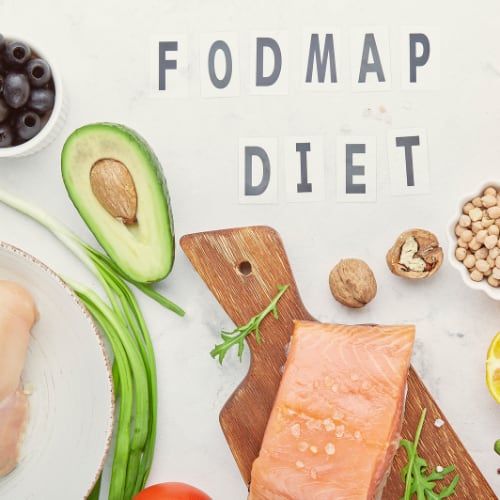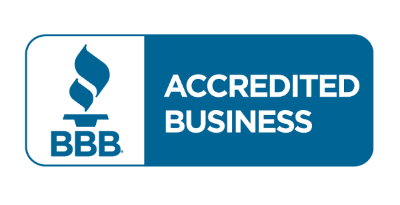
What Are FODMAPs?
Disease Nutrition
You may be wondering what FODMAPs are or how to implement a FODMAP diet into your lifestyle. This helpful guide walks you through the basics of FODMAPs, what foods to avoid, and how you can work to ease symptoms of IBS and IBD by following some simple dietary changes.

What Are FODMAPs?
Disease Nutrition
You may be wondering what FODMAPs are or how to implement a FODMAP diet into your lifestyle. This helpful guide walks you through the basics of FODMAPs, what foods to avoid, and how you can work to ease symptoms of IBS and IBD by following some simple dietary changes.
It's estimated that 3.1 million Americans live with Irritable Bowel Disease (IBD). IBD consists of Ulcerative colitis and Chron's disease.
Both diseases affect the digestive tract and usually require dietary intervention, if not a medical one. One way of improving symptoms is by monitoring FODMAPs.
What Are FODMAPS?
FODMAPs are fermented carbohydrates. These carbs can cause digestive issues in certain people. Microflora-producing gas rapidly ferments these carbohydrates, causing painful bloating and gas, among other symptoms.
The acronym "FODMAP" stands for Fermentable Oligosaccharides, Disaccharides, Monosaccharides, and Polyols. In short, FODMAPS are polyols, galactans, fructose, fructans, and lactose. They encompass many different foods.
Here's a breakdown of FODMAPs and the foods they're found in.
Olisocaccharides
These carbs include fructans. More specifically, inulin and fructose-oligosaccharides.
Foods included in this category are rye, wheat, pulses, legumes, vegetables such as scallions, leek, garlic, white onions, red cabbage, broccoli, green cabbage, and Jerusalem artichoke.
Additional foods include nectarines, pears, watermelon, blueberries, mulberries, sour cherries, raspberries, red currants, cantaloupes, bananas, and figs. It's important to note that seeds are also hard to digest.
Disaccharides
In this group, the main FODMAP is lactose. This includes soft cheese, yogurt, and milk. Cow's milk, goat's milk, and sheep's milk are all included.
If you're on a low FODMAP diet, you'd want to avoid these foods and more, including cream cheese, quark, cottage cheese, custard, kefir, sour cream, ice cream, and ricotta.
Monosaccharides
The main FODMAP in this category is fructose. Foods in this category include agave, honey, and a variety of fruits. This includes dry fruits, such as sultanas, apples, and dates.
Other fruit byproducts include chutneys, fruit jams, plum sauce, barbeque sauce, gherkins, and sundried tomatoes.
Breakfast cereals containing fruits, oats, and wheat also fall in this category, along with canned fruits such as plums, pineapples, and strawberries. Fresh fruits, including apples, bananas, kiwis, pears, and grapes, are also in this category.
Polyols
Included in the polyols group are carbohydrates such as xylitol, mannitol, and sorbitol. This includes sweeteners you'd commonly see in sugar-free gum, for example.
You can also find polyols in fruits and vegetables, including pitted fruits like plums, peaches, and cherries. Other fruits and vegetables are cauliflower, mushrooms, apricots, apples, pears, green beans, and nectarines.
How Do They Affect Your Health?
If you have IBS or IBD (or are prone to digestive issues), FODMAPS may trigger or worsen your symptoms. Since FODMAPS can ferment and lead to gas, their water-attracting properties affect how your bowels move.
This can lead to distension and is caused by a fluid increase and causes gas to press on the bowels.
Additionally, this can lead to bloating, abdominal pain and cramping, constipation, diarrhea, and more. These symptoms affect how the bowel wall muscles contract, leading to pain and even more discomfort.
If you have Ulcerative Colitis, a form of IBD, you may be told to go on a "low-FODMAP" diet or advised to avoid FODMAPs altogether.
FODMAP Diet
The most common FODMAP diet is a low-FODMAP diet plan. As mentioned, this diet can help anyone experiencing IBS or IBD, especially during an ulcerative colitis "flare."
As with any diet, only begin one under a doctor's supervision.
Begin by removing all high-FODMAP foods. Replace them with low-FODMAP foods. Be sure to include all nutrients and food groups.
When following the low-FODMAP diet, stick to it for 2-6 weeks. Look to see if symptoms improve if used to combat IBS or IBD.
Over the next 8-12 weeks, slowly reintroduce high-FODMAPs. The goal is to see which FODMAPs your body can and can't tolerate.
As you introduce a new high-FODMAP, only introduce one at a time every three days. During these three days, gradually increase the amount of the new FODMAP daily. Check to see if symptoms return after you've completed this elimination diet.
Limitations
Anyone experiencing an eating disorder should not try the low-FODMAP diet. It's restrictive and should be avoided.
Additionally, pregnant people should avoid the low-FODMAP diet. Pregnant women risk missing important dietary supplements that can only be found in certain foods. The low-FODMAP diet may deprive a growing fetus of essential vitamins and minerals it needs to grow.
Precautions
While a low-FODMAP diet can help anyone experiencing IBS or IBD, several drawbacks may exist.
For example, when high-FODMAP foods are restricted for extended periods, bacterial colonies in the gut may experience changes. These changes can harm your intestinal health. You may even experience worse digestive issues than the ones you intended to treat.
Additionally, the body needs oligosaccharides for energy, as they help beneficial bacteria.
Understanding FODMAPs
Although FODMAPs have a place in every balanced diet, high-FODMAP foods can lead to GI distress. A low-FODMAP diet may help reduce the incidence of IBS and IBD and can work to alleviate symptoms. Once you identify trigger foods, you can work to reduce or remove certain FODMAPs from your diet.
If you're looking to improve your overall health, FirstFitness Nutrition can help by offering a myriad of health and wellness products.
Be sure to check out our complete Product Catalog today, or contact us with any questions. A dedicated staff member will be happy to assist you with any inquiries.

Jay Todtenbier is an original founder of SupplementRelief.com in 2010 and has operated the business ever since. He is also a tennis instructor and gospel musician. Formerly he spent 25 years in business development, technology and marketing with startups and major corporations having gone through the tech boom in Silicon Valley in the 90s. He became passionate about, and began studying and practicing Wellness as a Lifestyle after experiencing chronic, personal health challenges including depression, auto-immune disorders, and being overweight that impacted his ability to live a healthy, vibrant life. Since then, he has been an advocate for healthier living encouraging others to live better through making small, gradual changes to lifestyle behaviors relating to whole-foods nutrition, stress management, reasonable exercise, proper sleep, and the use of targeted, high-quality supplements.
Learn more about Jay Todtenbier.
-
 Discussion Forum
Questions or Feedback?
Discussion Forum
Questions or Feedback?Ask questions. Share your thoughts. Note that we cannot answer questions relating to specific medical conditions - please refer those to your qualified healthcare provider.
Post a new Comment or Reply to an existing one. Help for using the Discussion Forum.
 Discussion Forum Help
Discussion Forum Help
Comments are displayed in order of the last one posted so the most recent one is at the top and the oldest one at the bottom.
Replies within a Comment are displayed in reverse order with the oldest one at the top and the most recent one at the bottom.
Each post identifies
 who made the post and the
who made the post and the  date and time the post was made.
date and time the post was made.Mouse over the icons for tooltips that explain what they mean.

If you see this icon you can attach an Audio file to your post.

If you see this icon you can attach a Document file to your post.

If you see this icon you can attach an Image file to your post.

If you see this icon you can attach a Video file to your post.
You will see the
 Ban icon (Report Post as SPAM) immediately following the Timestamp of the post. Click this icon if you feel strongly that the content posted is not appropriate and should be reviewed by the Forum Moderator. You will be provided with a confirmation dialog to be sure you wish to submit this post for review. If submitted, the Forum Moderator will be notified to review the post and will determine what type of action to take.
Ban icon (Report Post as SPAM) immediately following the Timestamp of the post. Click this icon if you feel strongly that the content posted is not appropriate and should be reviewed by the Forum Moderator. You will be provided with a confirmation dialog to be sure you wish to submit this post for review. If submitted, the Forum Moderator will be notified to review the post and will determine what type of action to take.Click
 in the upper right corner of this Help modal or anywhere on the web page outside of the modal to exit Help.
in the upper right corner of this Help modal or anywhere on the web page outside of the modal to exit Help.
![]() Session Expired from Inactivity
Session Expired from Inactivity
Do you want to?
9618 Jefferson Highway, Suite D-191
Baton Rouge LA 70809-9636
(888) 424-0032 |
support@supplementrelief.com
* Disclaimer: This page is available exclusively for SupplementRelief.com clients. None of the information on this website is intended to replace your relationship with your healthcare provider(s). Nothing should be considered medical advice. The information, knowledge, and experience shared on this website are the opinions of SupplementRelief.com. This site and its content are intended to enhance your knowledge base as YOU MAKE YOUR OWN HEALTHCARE DECISIONS in partnership with your qualified health professional.
* These statements have not been evaluated by the Food and Drug Administration. These products and services are not intended to diagnose, treat, cure, or prevent disease.
* There is NO GUARANTEE OF SPECIFIC RESULTS for the products or services offered, and the RESULTS CAN VARY for each individual. Any results claimed by our customers are based on individual experiences that are unique and cannot be guaranteed.
FirstFitness Nutrition and NuMedica may be promoted and sold on the internet ONLY by Authorized Resellers who have been approved by and have registered their website domain with these companies. They strictly prohibit, and actively monitor, the UNAUTHORIZED SALE or RESALE of their products in ALL online public shopping portals including Amazon, eBay, and others and into other countries. All products purchased in SupplementRelief.com are for PERSONAL USE ONLY and CANNOT BE RESOLD to others. Please report violations of Reseller Policy directly to FirstFitness Nutrition at 800.621.4348 and to NuMedica at 800.869.8100.
The content and photographs on this website are copyrighted or Licensed Material and may not be downloaded for other than personal use. Republication, retransmission, reproduction, or any other use of the content or photographs is prohibited. ©2010-2024 SupplementRelief.com.
Are you sure you want to remove this item?

